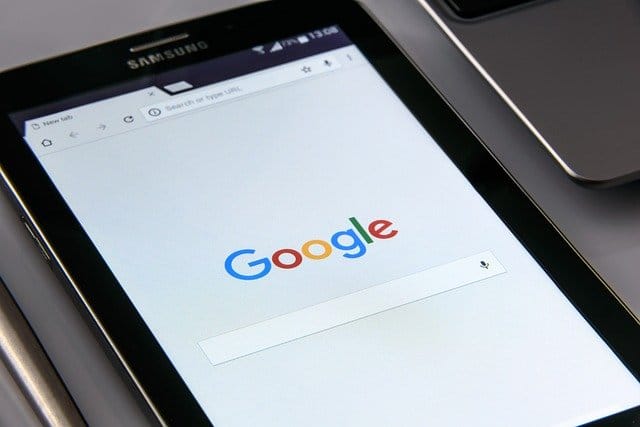The next big thing from Google’s ever-growing technological development is mobile-first indexing. Google began a slow rollout about two years ago, although the idea was hatched about five years ago.
Advertisers and SEO experts have had more than enough time to process the move and understand what it means to the advertising field. According to Google Search Central, indexing will focus more on smartphone pages and desktop pages will slowly be phased out. The big question is how this new move will affect the link graph in Google.
Why is Google taking such a bold step?
In the last few years, mobile app development has taken another dimension and more application developers are creating apps for use on mobile devices. At the close of 2016, numerous articles were published indicating mobile phone internet users were overtaking desktop internet users.
Since then, the trend has consistently grown and today, about 60 percent of internet searches are done on mobile gadgets. Despite this fact, Google is still using the desktop version to evaluate the relevance of web page content. The biggest problem with this is that mobile phone pages display less content compared to desktop pages.
In reality, mobile phone algorithms do not evaluate the actual content displayed on a mobile phone screen. As a result, most of the content that would have been displayed gets eliminated. What fails to get displayed would be what is most important for the benefit of an advertiser.
What does Mobile-first indexing mean?
There is something noteworthy here – the rolling out of Mobile-first indexing will not mean there will be two different indexes in terms of one index for mobile phones and another for desktops. Instead, there will be only one index.
Currently, indexing is done first on desktop, even when the searches are done on mobile phones. This process is called desktop-first indexing but due to its limitation in what is displayed on mobile phones, Google decided to prioritize indexing on the mobile phone first.
That means, even when you do your searches on desktop, what will be displayed will be based on the mobile version of the google search engine algorithms. Google Search Central further explains this concept this way – it is like a big library full of hardcopy books. Lately, more people have been searching for e-libraries.
The same books you will find in a brick and motor library are the same you will find in an e-library. However, since more people are opting for e-libraries, eventually, the traditional libraries will be phased out.
That’s how the concept will work with Mobile-first indexing – as more people adopt searching on mobile devices, desktop searches will be phased out by mobile searches. The mobile-first indexing will affect the link graph in a couple of ways.
1. How Google is rolling out the process
The processing has been ongoing for the last two years and it might continue for some time. The reason why Google didn’t roll out instantly is that not every stakeholder was ready in the beginning. Even today, most of them are not yet ready, and thus, Google is rolling out cautiously by first switching over ready websites.
If they did it suddenly, the entire global web would be thrown into a crisis because most webmasters are still working on compliant issues. This doesn’t mean the process will take forever but website masters need to speed up and make their websites mobile user-friendly.
2. Possible problems with this migration?
By itself, moving from desktop-first indexing to Mobile-first indexing has no problems because users will continue to access the internet as before and do their searches. The problem comes when the mobile algorithms remove some of the content and links that were meant to bring business to businesses.
The algorithms do this to make the page displayed look good before the eyes of the user. The screen of a mobile phone is small and if it displays all the content and links on a page, it will look clogged and a user might decide to ignore that page and look for other pages with a better user experience.
Moreover, when links and important content fail to get displayed, the website will get fewer visits, lesser clicks, and far much less ROI. If the link graph on Google was performing high, it would begin to have a downward curve and the advertiser might start to lose business.
What does a link graph do?
Advertisers publish advertising content that is linked with backlinks to the website. They use several other ways to help users reach the sites they are advertising and buy products. The link graph helps them to know how a particular post is performing, including the page that hosts the post. The graph is important when advertisers want to know if they should continue to use the link or adjust to another one.
3. The connection between a link graph and mobile-first indexing?
First, understand that links are what determine page performance and profitability or conversion rate. The link structure should remain as it is for it to perform to the maximum. If the link is gaining more traffic, automatically, it helps the page ranking in google. If it attracts only a handful of traffic, it will rank poorly on Google ranking.
Unless a quick correction action is taken, the current status of mobile-first indexing depends on desktop-first indexing. This approach is engulfed in a major crisis because for the page to be displayed on a mobile phone screen, it means a lot of content has to be removed.
Think about a webpage content displayed on a twenty-four-inch screen and then take the same content, condense it and display it on a five-inch screen. It will be impossible to view some of the content or it will look untidy and clogged.
To make the display look nice, that’s why Google algorithms are eliminating most of the content and only displaying what can fit on the tiny phone screen. This is the connection between the link graph and mobile-first indexing.
Because most of the content failed to display on the mobile phone, the user will only see about 20 percent of the important content. What it means by important content is the content that was meant to redirect the user to the advertiser’s webpage and these are the links, then click on icons, etc. As a result, the link graph will have no activity, and thus, it will either have a flat curve or a downward curve.
The solution is to create your pages and make them mobile user friendly. Google understands this challenge and they are still working to improve the advertiser experience.
After launching your page, test it to make sure it’s mobile-friendly. Choose a responsive web design. If you are not good at web sign and development, hire an experienced developer.
Conclusion
About two years ago, Google began to roll out mobile-first indexing and the process is still ongoing. After full implementation, raking will be done using mobile phone algorithms and desktop first algorithms will slowly be phased out. What this means to advertisers is that their links might be affected because mobile phone screens are small and remove a lot of content. The link will likely perform poorly but as Google works out on a solution, the challenge will soon be overcome.
Author Bio:
Eliza Sadler is one of the top essay writers and a professional journalist with extensive experience of four years. She has worked with dissertation services and is currently working lead writer. Her focus is always on producing top quality and captivating her audience with an amazing level of work on every order. You can get in touch with her via email.












